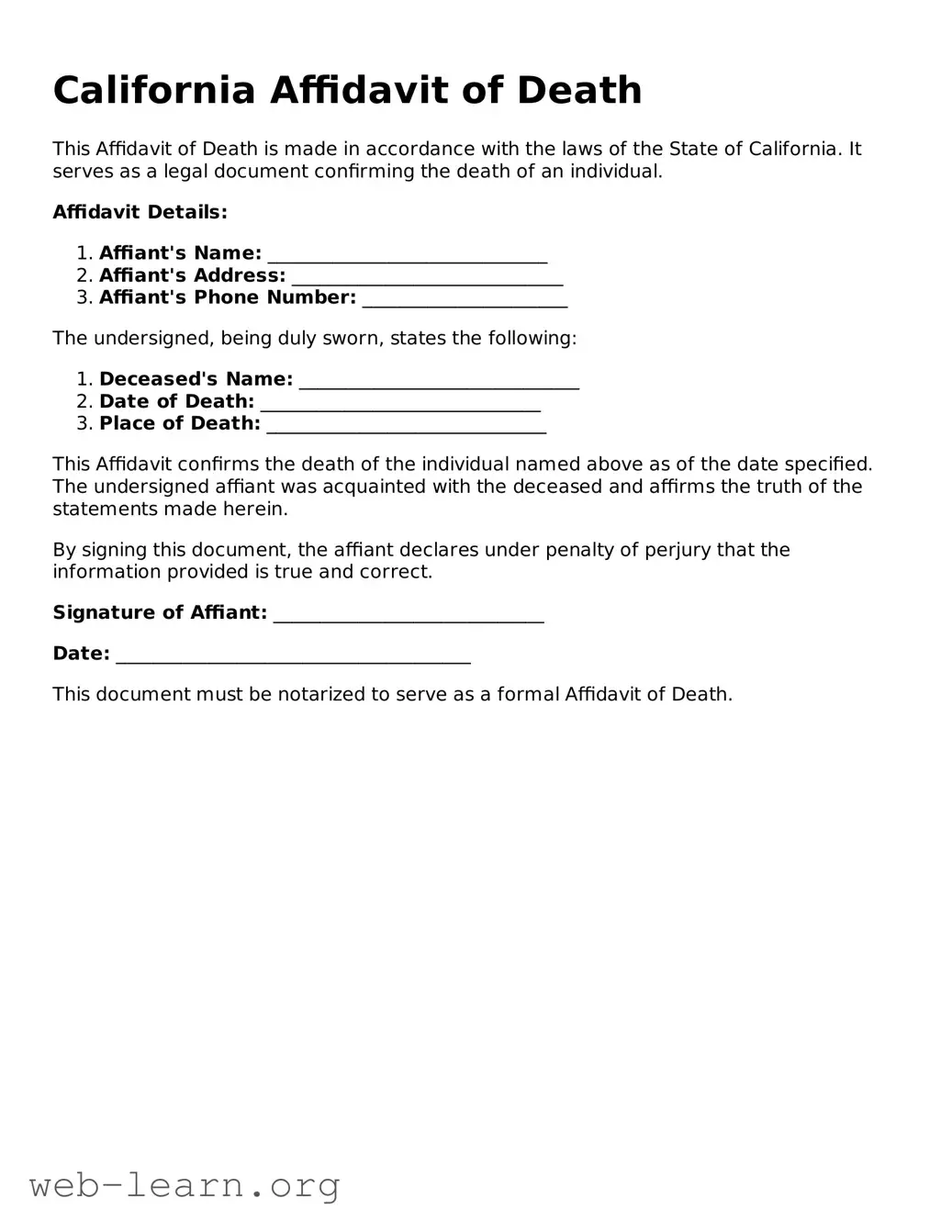When filling out the California Affidavit of Death form, many individuals overlook important details. It's easy to make mistakes, especially during a stressful time. One common error is failing to include the deceased person's full name. Make sure to provide the complete name as it appears on the death certificate. This helps avoid confusion down the line.
Another frequent mistake involves the date of death. Some people forget to note the exact date, while others might provide an incorrect date. Always double-check against official documents. Accurate dates are crucial for the legal standing of the affidavit.
A third error is omitting required signatures. Both the affiant (the person filling out the form) and any necessary witnesses must sign the affidavit. Without these signatures, the document may be deemed incomplete, potentially hindering its acceptance.
Inaccurate information about the affiant is another mistake people make. Ensure that your name, address, and relationship to the deceased are clear and accurate. This helps establish your authority to complete the document.
Check the notarization requirements, as they can trip people up. Depending on the situation, you may need a notary to validate the affidavit. If this step is missed, it could lead to delays or issues in processing.
Many forget to specify the relationship to the deceased clearly. It's important to describe your connection, whether you are a spouse, child, or another relative. This adds clarity to the affidavit and supports its legitimacy.
Using the incorrect form can also be problematic. Ensure you have the correct Affidavit of Death version provided by California authorities. Using an outdated or wrong form could lead to complications.
Sometimes, individuals fail to keep copies of the completed affidavit. Keeping a copy for your records is vital. In case any questions arise later, having documentation on hand can save a lot of time and trouble.
Finally, it’s critical to be aware of the filing requirements in your county. While the affidavit itself is standardized, different counties might have specific submission procedures. It’s best to verify how to submit it correctly to facilitate a smooth process.
